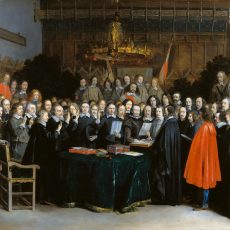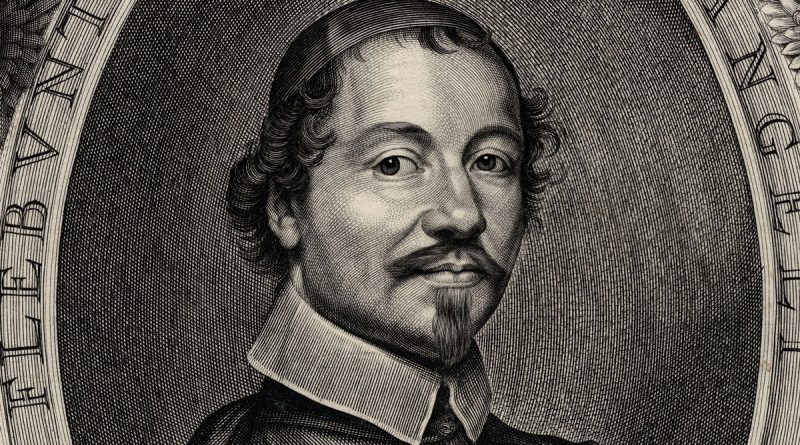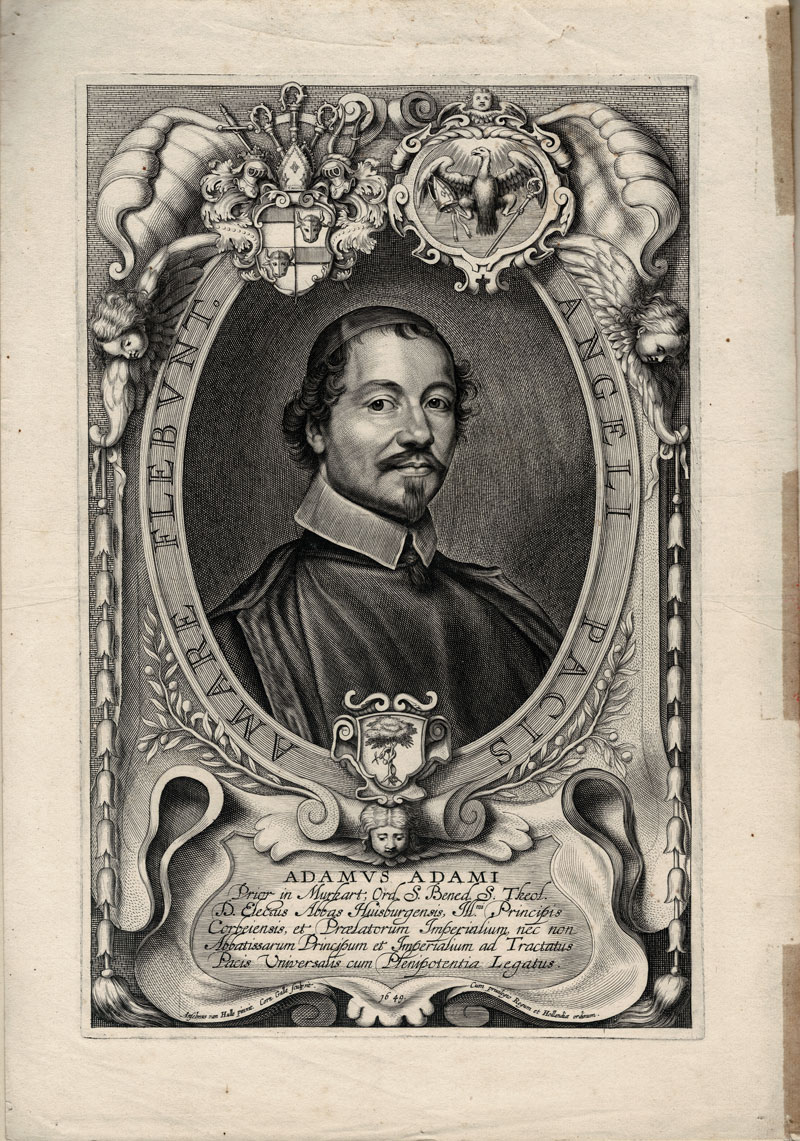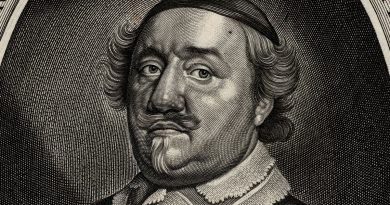17th Century Engraving – Portrait of Adam Adami
Portrait of Adam Adami
Late 17th Century Copperplate Engraved by Galle after Anselmus van Hulle
From from Pacificatores orbis Christiani published in Rotterdam 1697 which featured portraits of the delegates to the Peace of Westphalia by Flemish artist Anselmus van Hulle.
Adam Adami (1603 – 1663) was a 17th Century monk, diplomat, priest and statesman who became one of the negotiators at the Peace of Westphalia representing the restituted monasteries and chapels of Swabia. His account of the peace talks is one of the primary historical sources on the Peace of Westphalia (Westfälischer Friede).
Texts on Engraving: ‘Angeli Pacis amare flebunt” Adamus Adami/Prior in Murhart; Ord. S. Bened. S.Theol./D.Electus Abbas Huisburgensis III.mi Principis/Corbeiensis et Praelatorum Imperialium nec non/Abbatissarun Principum et Imperialium ad Tractatus/Pacis Universalis cum Plenipotentia Legatus. /Anselmus van Hulle pinxit. Corn. Galle sculpsit. accipit Privilegium Caesareum. Cum privilegio Regum et Hollandiae ordinum. 1649.
Condition: Some tape stains at edges. Very crisp impression with a few spots and light age toning.
Dimensions: 37 X 25.5 cm
Rotterdam 1697

The Peace of Westphalia (German: Westfälischer Friede) was a series of peace treaties concluded in 1648 which ended Europe’s bloody Wars of Religion including the Thirty Years War and Eighty Years War. An estimated 8 million people had died in the series of terrible conflicts.
In 1645, the Prince of Orange dispatched his court painter Anselm van Hulle to create portraits of the delegates from across Europe who were gathering in Osnabrück and Münster, in Westphalia, Germany for the great peace talks. It was the event of the age, the first time that a great conflict was to be ended through international negotiations at a great diplomatic congress. It would come to be considered by many the beginning of an era of diplomacy. The concept of state sovereignty – Westphalian sovereignty – the principle that each state has sovereignty over its territory – arose from the talks.
The portraits created by Anselm at his workshop in Muenster were first sold as single sheet editions, collected by the delegates themselves and by people and governments in regions which sent them. In subsequent years they were published as bound collections, one of the most famous of which is Pacificatores orbis christiani published in Rotterdam at the end of the 17th Century.
The portraits in Pacificatores orbis christiani are based on portraits of delegates to the peace talks by Anselm van Hulle (1601-1674) and Abraham Jansz van Diepenbeeck (Flemish 1596-1675). The engravings were made by the some of the great craftsmen of the time.Engraved by: Pieter de Bailliu (Flemish, 1613–1660) Mattheus Borrekens (Flemish, 1615–1670) / Pieter Clouwet (Netherlandish, 1606–1670) / Antony van der Does (Netherlandish, 1609–1680) / Cornelis Galle, Jr. (Netherlandish, 1615–1678) / Pieter de Jode II (Flemish, 1606–after 1674) / Theodor Matham (Netherlandish, 1605 to 1606–1676) / Paul (Paulus) Pontius (Netherlandish, 1603–1658) / Coenrad Waumans (Netherlandish, born in 1619) / Pieter van der Slaart (Dutch, 17th century).






